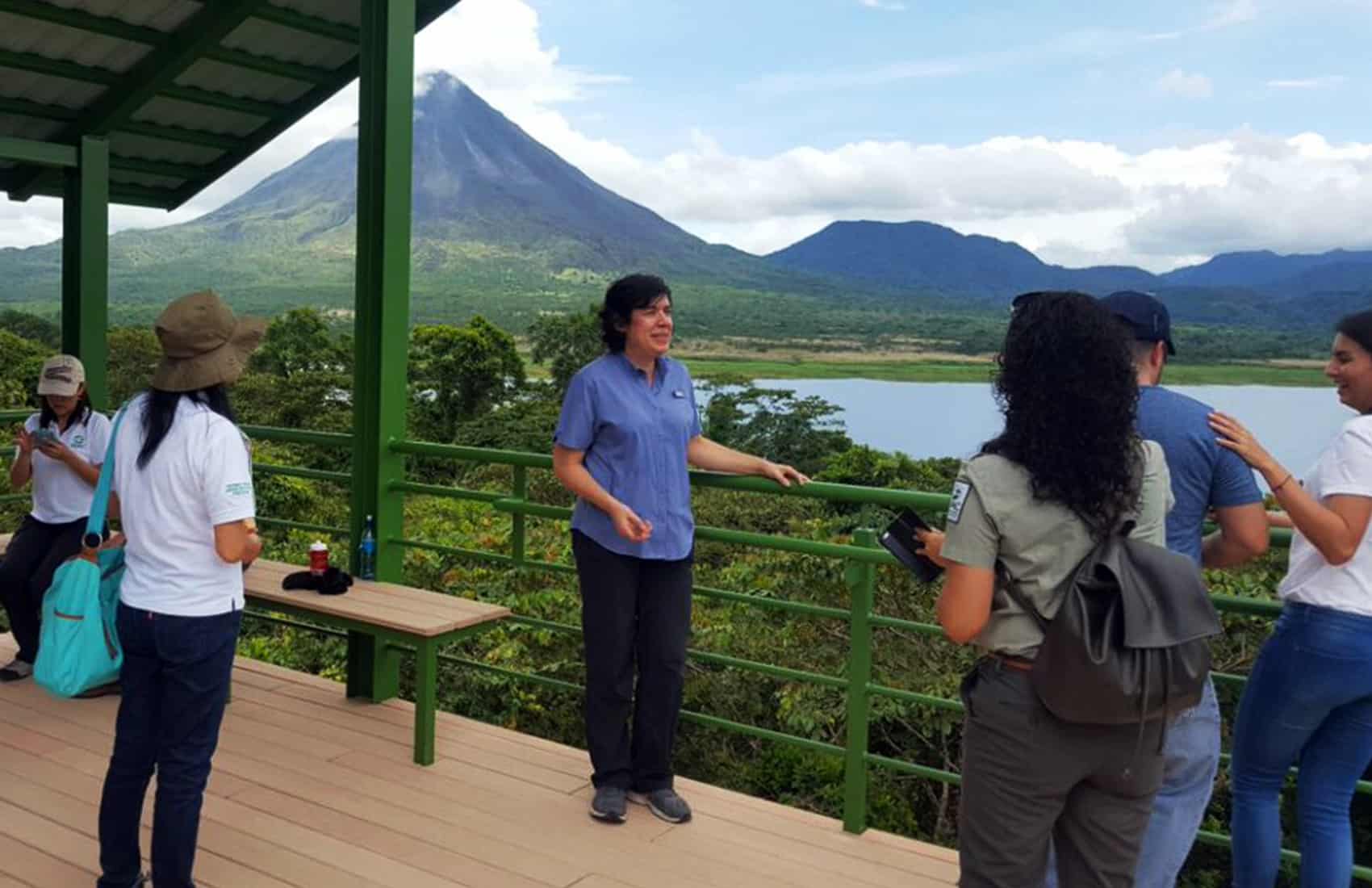Environment Ministry (MINAE) officials have reported an increase in the unauthorized entry of tourists to restricted areas of Arenal Volcano National Park, one of Costa Rica’s most popular destinations. Visitors are not allowed within an established perimeter that averages 4 kilometers (2.5 miles) from the crater. The measure aims to protect visitors from both volcanic activity and rough terrain.
Park administrators said that unlicensed tour guides are increasingly promoting hiking tours to the volcano’s cone, which poses a severe risk for tourists.
At risk
MINAE officials explained in a news release that because the area around the volcanic cone is not an authorized tourist site, it does not have any infrastructure for visitors. The restricted area lacks tourist trails or proper demarcation, and it includes very steep slopes. “The accumulation of material from the volcano makes the slopes unstable and prone to landslides,” the MINAE report states.
Eliécer Duarte, a volcanologist with the Volcanological and Seismological Observatory of Costa Rica (OVSICORI), told The Tico Times that for the most part, Arenal has been quiet for the past seven years. However, the areas close to the crater still maintain high temperatures and gas spewings.
“Temperatures at fumaroles near the crater can reach some 200 degrees Celsius (392 ° F),” he said. Duarte said the biggest risk for those trying to reach the summit are rocks that fall from the sides of the volcano. “We’ve seen falling rocks the size of a house. Some of them measure 13 by 35 meters (42 x 115 feet),” he said.
Both the ascent and descent from the cone demand great physical preparation, as each trip represents a four-hour walk on very inhospitable terrain, Duarte said. The terrain’s topography, the dense vegetation and even weather conditions are a significant challenge for many.
Ongoing problem
MINAE prohibited entrance to the restricted area in 1998. Today, access is allowed only for scientists, as well as staff from MINAE and the ministry’s National System of Conservation Areas. However, Duarte said OVSICORI staff frequently see groups of people walking inside the restricted area and hiking on the volcano’s slopes.
“At nights, they look like fireflies. You can see them moving in lines from nearby areas, and even from the roads,” Duarte said. He said unlicensed tour guides are organizing many of these trips. “They are usually near bus stations and other tourist sites. They approach tourists and offer to take them to the crater and other restricted areas,” he said.
Many of them also promote their trips on websites and Facebook profiles and then agree on a meeting point. “These so-call guides and their businesses are also hurting the park’s finances, as these people do not pay entrance tickets,” Duarte said. Wilson Barrantes, Regional Director of the Arenal Huetar Conservation Area, told The Tico Times that area officials have witnessed a spike in the illegal entrance of visitors to Arenal.
“They are entering areas strictly devoted to conservation, not to visitation, but some people just care about profiting from the park’s resources,” he said.
Prison time
Barrantes said the conservation area is increasing surveillance, and noted that National Police or Tourism Police officers will immediately evict anyone found inside a restricted area. They also will file a disobedience of authority complaint against those responsible for illegally taking people into a banned area.
According to Costa Rica’s Criminal Code, those found guilty of such a charge could face prison sentences ranging from six months to three years. Barrantes said taking people to the restricted areas is highly irresponsible and “represents a huge risk, as it would take a lot of time and effort for a rescue team to reach and transport someone who is hurt.”
He called on visitors to the area to enter the park only at authorized entrances. There are two official trails that explore Arenal National Park: Coladas and Ceibas. The park administration plans to open a third trail, La Península, next weekend, Barrantes said on Tuesday.
“The new trail has big common areas, new viewpoints and essential services, all following accessibility standards,” Barrantes said.
Recommended: La Fortuna, Arenal Volcano, and the Northern Plains









